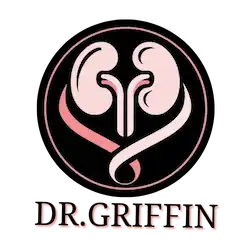Gallbladder removal surgery is a common procedure that many people undergo to resolve gallbladder-related issues. Dr. Griffin, a leading expert in the field, emphasizes that understanding the process and its effects can help patients feel more prepared and at ease. Whether you are dealing with gallstones or chronic gallbladder problems, gallbladder removal surgery can significantly improve your quality of life.
What is the Gallbladder?
The gallbladder is a small, pear-shaped organ located beneath the liver. It stores and releases bile, a digestive fluid that helps break down fats in the small intestine. While the gallbladder plays a role in digestion, it is not essential for survival. Many people live healthy lives without it after undergoing Gallbladder Removal Surgery.
What Does the Gallbladder Do?
Storage of Bile
The gallbladder serves as a reservoir for bile, a digestive fluid produced by the liver. Bile is rich in bile salts, cholesterol, and waste products like bilirubin, which are essential for breaking down dietary fats. The gallbladder stores bile and concentrates it by removing water, ensuring it is readily available in a more potent form when needed. This storage function is vital for efficient digestion, especially when meals contain high levels of fat.
Controlled Release
When you consume fatty foods, the gallbladder plays a critical role in digestion by releasing bile into the small intestine. This release is triggered by a hormone called cholecystokinin, which signals the gallbladder to contract and expel bile through the bile ducts into the digestive tract. This controlled release ensures that bile is available precisely when fats enter the intestine, aiding in their emulsification and absorption. Without this timed release, fat digestion would be less efficient, leading to potential discomfort or nutrient malabsorption.
Support in Fat Breakdown
Bile facilitates the breakdown and absorption of fats by emulsifying large fat molecules into smaller droplets, making them more accessible to digestive enzymes like lipase. Without a gallbladder, bile flows continuously in small amounts from the liver to the intestine, which may affect the timing and effectiveness of fat digestion. However, most individuals adapt well to this change over time, and dietary adjustments, such as eating smaller, low-fat meals, can help minimize any digestive challenges.

What Causes Gallbladder Problems?
Gallstones
Gallstones are hardened deposits that form in the gallbladder, primarily composed of cholesterol, bile salts, and calcium. These deposits can vary in size, from tiny grains to larger stones. Gallstones can block the bile ducts, leading to intense pain, known as biliary colic, typically felt in the upper right abdomen or back. In some cases, gallstones may not cause symptoms, but when they do, they can lead to nausea, vomiting, or jaundice. Left untreated, gallstones can result in complications like inflammation or infection of the gallbladder.
Inflammation
Gallbladder inflammation, known as cholecystitis, often occurs when gallstones block the bile ducts, trapping bile inside. This blockage can lead to swelling, irritation, and infection. Acute cholecystitis is characterized by severe and persistent abdominal pain, fever, nausea, and tenderness over the gallbladder area. Chronic cholecystitis, on the other hand, may cause recurring mild symptoms over time. Without timely medical intervention, inflammation can lead to severe complications such as tissue damage, perforation, or abscess formation, requiring gallbladder removal surgery.
Biliary Dyskinesia
Biliary dyskinesia occurs when the gallbladder fails to empty bile efficiently into the small intestine, often due to motility issues. This condition can result in chronic abdominal pain, bloating, and difficulty digesting fatty foods. Diagnosis typically involves imaging tests and functional studies, and treatment may range from dietary modifications to gallbladder removal surgery if symptoms persist and significantly affect quality of life.
What Are the Symptoms of Gallbladder Problems?
- Persistent pain in the upper right abdomen, often after meals
- Nausea or vomiting
- Indigestion, bloating, or gas
- Jaundice, indicating a potential bile flow blockage
- Fever or chills, suggesting an infection
What are the Advantages of Laparoscopic Gallbladder Surgery?
Laparoscopic Gallbladder Removal offers numerous benefits compared to traditional open surgery. The minimally invasive nature of this surgery allows for smaller incisions, which leads to less pain, quicker recovery times, and a reduced risk of infection. Here are some key advantages of Laparoscopic Gallbladder Removal:
- Smaller incisions lead to less scarring.
- Faster recovery time compared to open surgery.
- Reduced pain and discomfort during recovery.
- Shorter hospital stays, often allowing patients to go home the same day.
- Lower risk of complications like infections and blood loss.
- Minimal disruption to daily life, with patients often able to return to work within a week or two.
Is Laparoscopic Gallbladder Removal for You?
Not everyone with gallstones or gallbladder problems is a candidate for Laparoscopic Gallbladder Removal. The decision depends on several factors, including the patient’s overall health, the size and type of the gallstones, and the presence of any other medical conditions. Here’s when you might be a good candidate for Laparoscopic Gallbladder Removal:
- You have gallstones causing pain or discomfort.
- You have gallbladder disease that affects normal function.
- You have repeated infections or inflammation in the gallbladder.
- You are in good overall health and not suffering from any serious complications, such as severe heart or lung conditions.
Why remove gallbladder instead of stones?
Removing the gallbladder is often recommended over just removing the stones because it prevents the recurrence of problems. Gallstones can form again if only the stones are removed, and the gallbladder remains at risk of future complications.
How Should I Prepare for Laparoscopic Gallbladder Removal?
Proper preparation is essential to ensure the success of Laparoscopic Gallbladder Removal. The preparation process may vary based on individual health needs, but here are some general steps to follow:
- Consult your doctor: Discuss any medications, allergies, and medical conditions with your surgeon.
- Avoid food and drinks: You’ll likely be instructed to fast for at least 12 hours before the surgery to prevent complications during the anesthesia process.
- Arrange transportation: As the procedure requires anesthesia, you’ll need someone to drive you home after the surgery.
- Stop smoking: Smoking can interfere with healing, so it’s important to quit or reduce smoking before the surgery.
- Follow pre-surgery instructions: Your surgeon will provide specific guidelines to ensure a smooth procedure and recovery.
How is Laparoscopic Gallbladder Removal Done?
Laparoscopic Gallbladder Removal is typically performed under general anesthesia. The procedure involves several small incisions, through which the surgeon inserts a camera (laparoscope) and surgical instruments to remove the gallbladder. Here is an overview of how Laparoscopic Gallbladder Removal is done:
- Incision and Access: The surgeon makes 3-4 small incisions in the abdomen to insert a laparoscope and other tools.
- Dissection: The gallbladder is carefully separated from surrounding tissue.
- Removal: The gallbladder is then removed through one of the incisions.
- Recovery and Monitoring: After the procedure, the patient is monitored for a few hours before being discharged, usually on the same day.
Laparoscopic Gallbladder Surgery Recovery Time
One of the main benefits of Laparoscopic Gallbladder Removal is the Laparoscopic Gallbladder Surgery Recovery Time. Patients often recover much faster than with traditional open surgery. Here’s what to expect during the recovery process:
- First few days: Expect mild pain and discomfort, which can be managed with medication.
- Return to daily activities: Most patients can return to work and normal activities within 1-2 weeks.
- Full recovery: While many people recover quickly, complete healing may take 4-6 weeks. Patients should avoid heavy lifting or strenuous activities during this period.
- Follow-up: A follow-up appointment with the surgeon is typically scheduled within 1-2 weeks to ensure proper healing.
How Does Gallbladder Removal Surgery Affect My Body?
Digestive Adjustments
In the absence of the gallbladder, bile flows continuously from the liver into the small intestine rather than being stored and released on demand. This constant, low-level release of bile may affect the digestion of larger or fatty meals initially. However, the digestive system is highly adaptable, and most individuals experience minimal long-term disruptions. Small, frequent meals can help the body adjust, as they require less concentrated bile for digestion compared to larger, fatty meals.
Dietary Changes
After gallbladder removal surgery, many patients are advised to make temporary dietary adjustments. Limiting fatty, greasy, or fried foods helps reduce strain on the digestive system while it adapts to the new bile flow pattern. Gradually reintroducing these foods can allow the digestive tract to adjust over time. A diet rich in lean proteins, fruits, vegetables, and whole grains is generally recommended. For some, these dietary adjustments become a permanent lifestyle change, enhancing overall health and digestion.
Long-Term Effects
Most individuals adapt remarkably well to life without a gallbladder, and any initial digestive discomfort typically resolves within weeks to months. The liver continues to produce bile, ensuring that digestion remains functional. While some people may notice minor changes in bowel habits, such as occasional diarrhea, these effects are generally manageable and do not significantly impact daily life. Long-term, the majority of patients live without any significant complications or dietary restrictions.
What Is the Recovery Time from Gallbladder Removal Surgery?
- Initial Recovery: Most people can resume normal activities within 1-2 weeks.
- Full Recovery: Complete recovery typically takes about 4-6 weeks.
- Post-Surgery Care: Following your surgeon’s instructions about activity levels and diet is crucial during this period.
Laparoscopic Gallbladder Removal
Among the various surgical approaches, Laparoscopic Gallbladder Removal is the most preferred due to its minimally invasive nature. This procedure involves making small incisions in the abdomen, through which a laparoscope (a thin, flexible tube with a camera) and surgical instruments are inserted. The surgeon removes the gallbladder without requiring a large open incision, leading to quicker recovery and minimal scarring.
Benefits of Laparoscopic Gallbladder Removal:
- Minimally invasive: Small incisions result in less pain and reduced risk of complications.
- Faster recovery: Patients can return to normal activities within a few days.
- Shorter hospital stay: Most patients are discharged the same day or within 24 hours.
- Lower risk of infection: Compared to open surgery, the risk of infection is significantly reduced.
Laparoscopic Gallbladder Surgery Recovery Time
One of the most common concerns patients have is about Laparoscopic Gallbladder Surgery Recovery Time. Since it is a minimally invasive procedure, recovery is relatively quick compared to open surgery.
What to Expect During Recovery:
- First 24 Hours: Some discomfort, soreness, and mild bloating. Patients are advised to rest and take prescribed pain medications if needed.
- First Week: Light activities can be resumed, but strenuous physical exertion should be avoided.
- Two to Three Weeks: Most individuals can return to work and daily activities without restrictions.
- Four to Six Weeks: Full recovery is expected, and patients can resume normal exercise and diet.
Following post-operative care instructions, including dietary modifications and staying hydrated, can enhance the recovery process.
Why Remove Gallbladder Instead of Stones?
A common question many patients ask is, why remove gallbladder instead of stones? The primary reason is that gallstones often recur. While gallstones can sometimes be removed or dissolved, they usually return, leading to persistent pain, inflammation, and complications like gallbladder infection or bile duct blockage. Gallbladder Removal Surgery eliminates the risk of recurrent gallstones, providing a permanent solution to gallbladder-related issues.
Conclusion
Gallbladder removal surgery is a transformative procedure that relieves persistent gallbladder issues, such as gallstones, inflammation, or biliary dyskinesia. With advancements in laparoscopic techniques, the surgery is minimally invasive, offering faster recovery and fewer complications. Dr. Griffin and his team are committed to delivering expert care and support throughout your journey, ensuring you achieve optimal health outcomes. By choosing gallbladder removal surgery, you are not only addressing current health problems but also preventing potential future complications. This surgery has helped countless individuals regain their quality of life, and with proper guidance, you can experience the same.
Read also Gallbladder Removal Side Effects.










